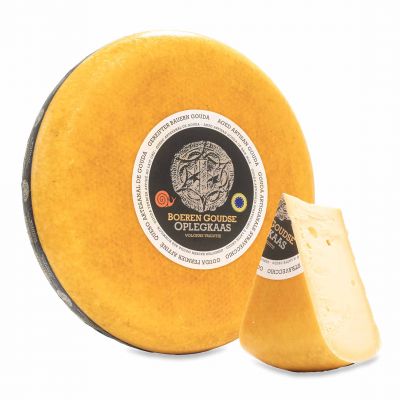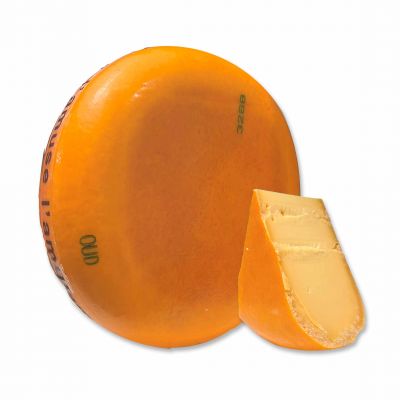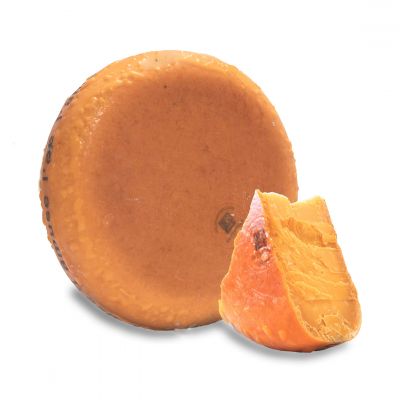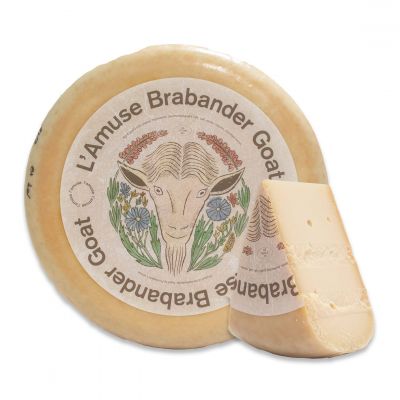LETTERALMENTE "FORMAGGIO DI FATTORIA GOUDA STRAVECCHIO". È IL MOTIVO DEL NOSTRO VIAGGIO NEI PAESI BASSI, ASSIEME A BETTY KOSTER DI FROMAGERIE L'AMUSE: RACCONTARVI DOVE NASCE IL GOUDA PRESIDIO SLOW FOOD
It is very dark, six o'clock in the morning, the temperature close to zero. We leave the lights of Amsterdam behind us, the streets still half-empty, the city still somewhat asleep. We head for the Groene Hart, the Dutch green heart, a flat, sparsely populated area between Amsterdam, Leiden and Rotterdam.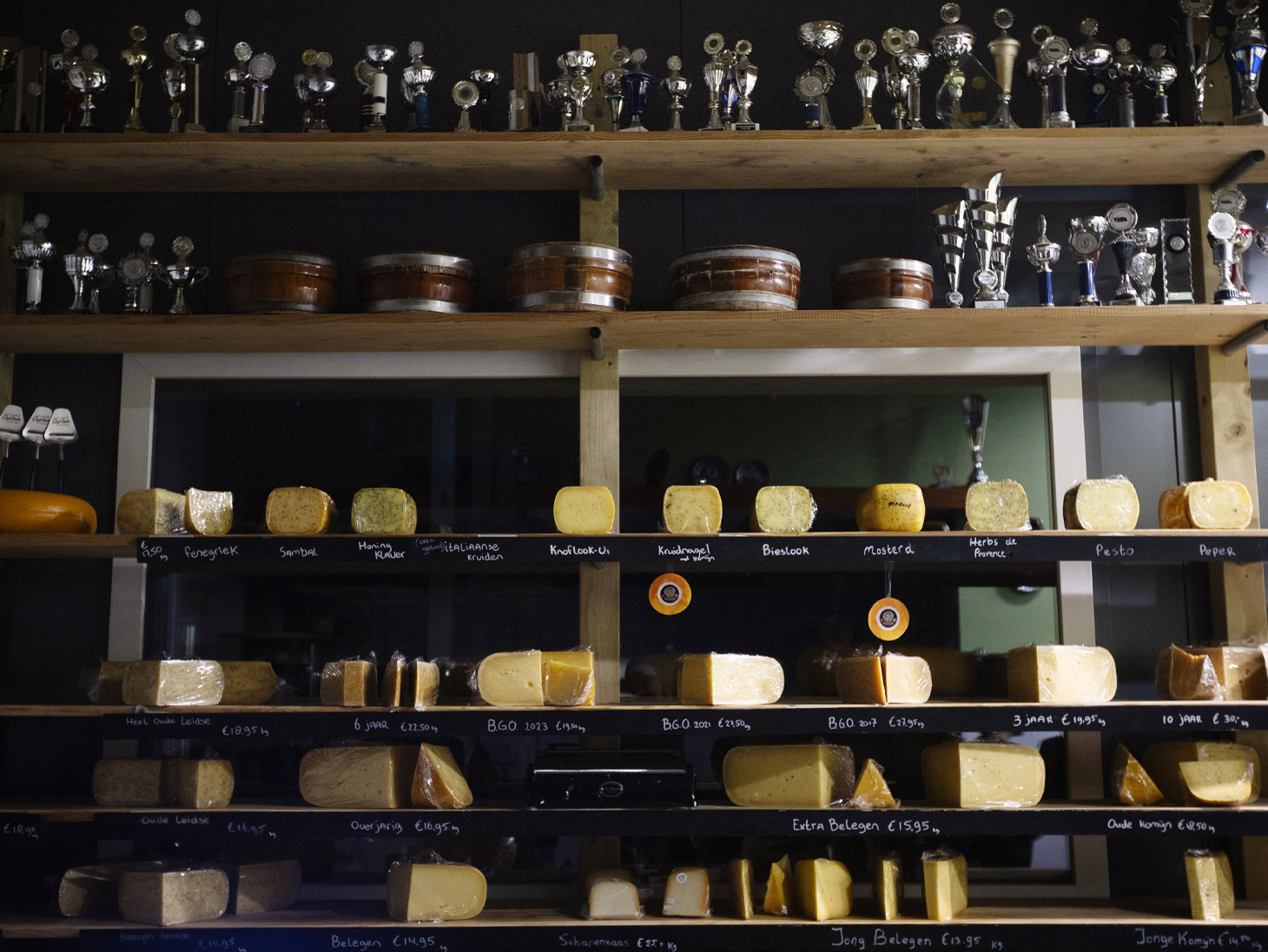
More precisely, the rendezvous is in Zoeterwoude, in the rural area of Weipoort, at the Cheese Farm Captein. The Capteins welcome us into their kitchen: Frank is having breakfast together with his sister-in-law, Femke. They are the cheesemakers, the latest generation of Capteins, together with Kees, Frank's brother, who runs the stable.
Mum Magdalène wanders around the kitchen, preparing tea for everyone, while dad Nico will join us later, at the end of our visit. Betty Koster, by Fromagerie L'Amuse, is our guide on this trip: it is thanks to her that we managed to organise the visit to Weipoort.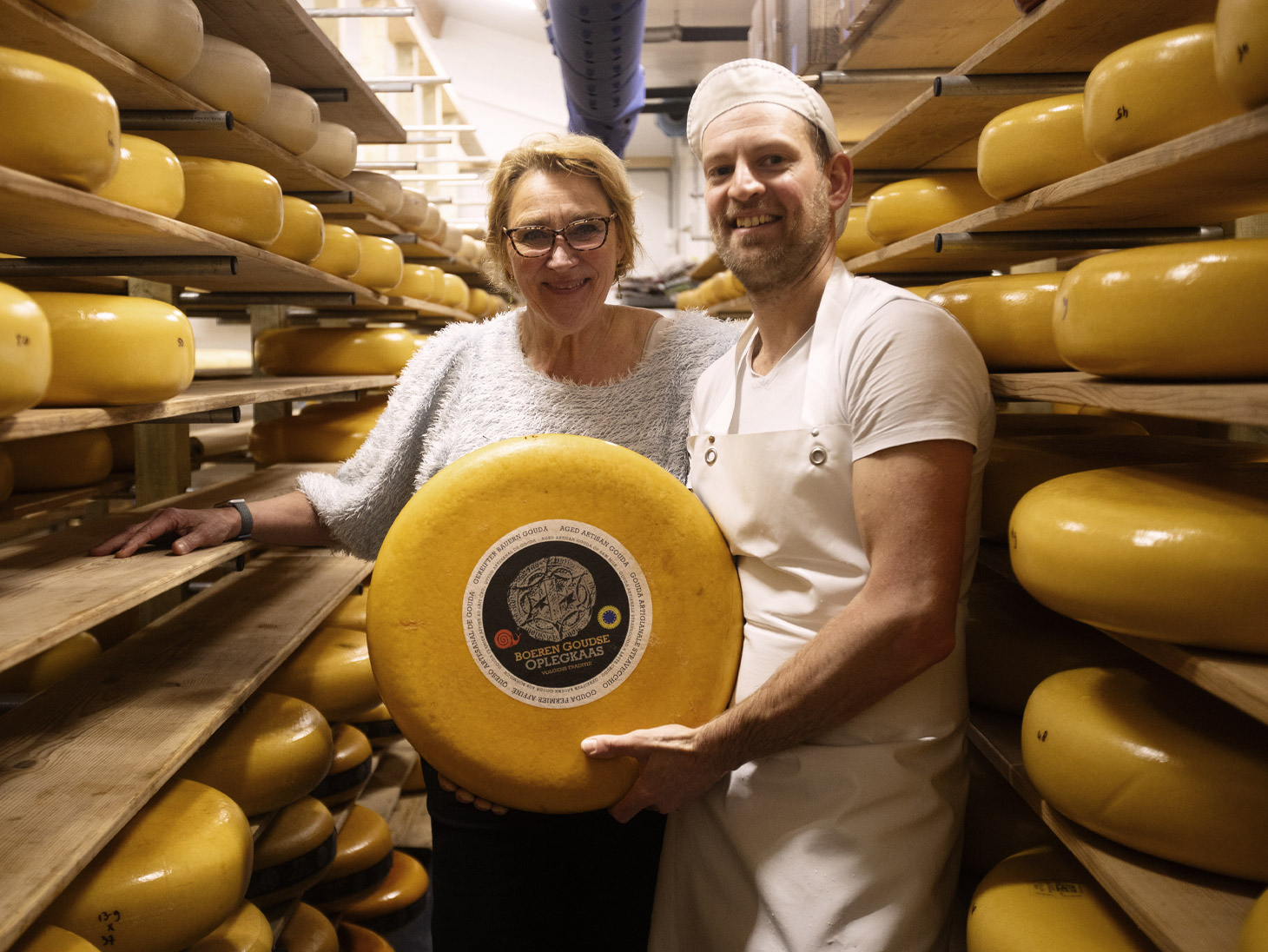
The Captein farm is a family-run, "fermier" business: a very short chain, the cowshed close to the dairy, where for generations artisan cheeses have been produced according to the ancient traditions of South Holland, the Aged Artisan Gouda their most iconic product. The Dutch name, “Boeren Goudse Oplegkaas”, often abbreviated by the acronym BGO, explicitly describes the three elements that make this cheese so unique.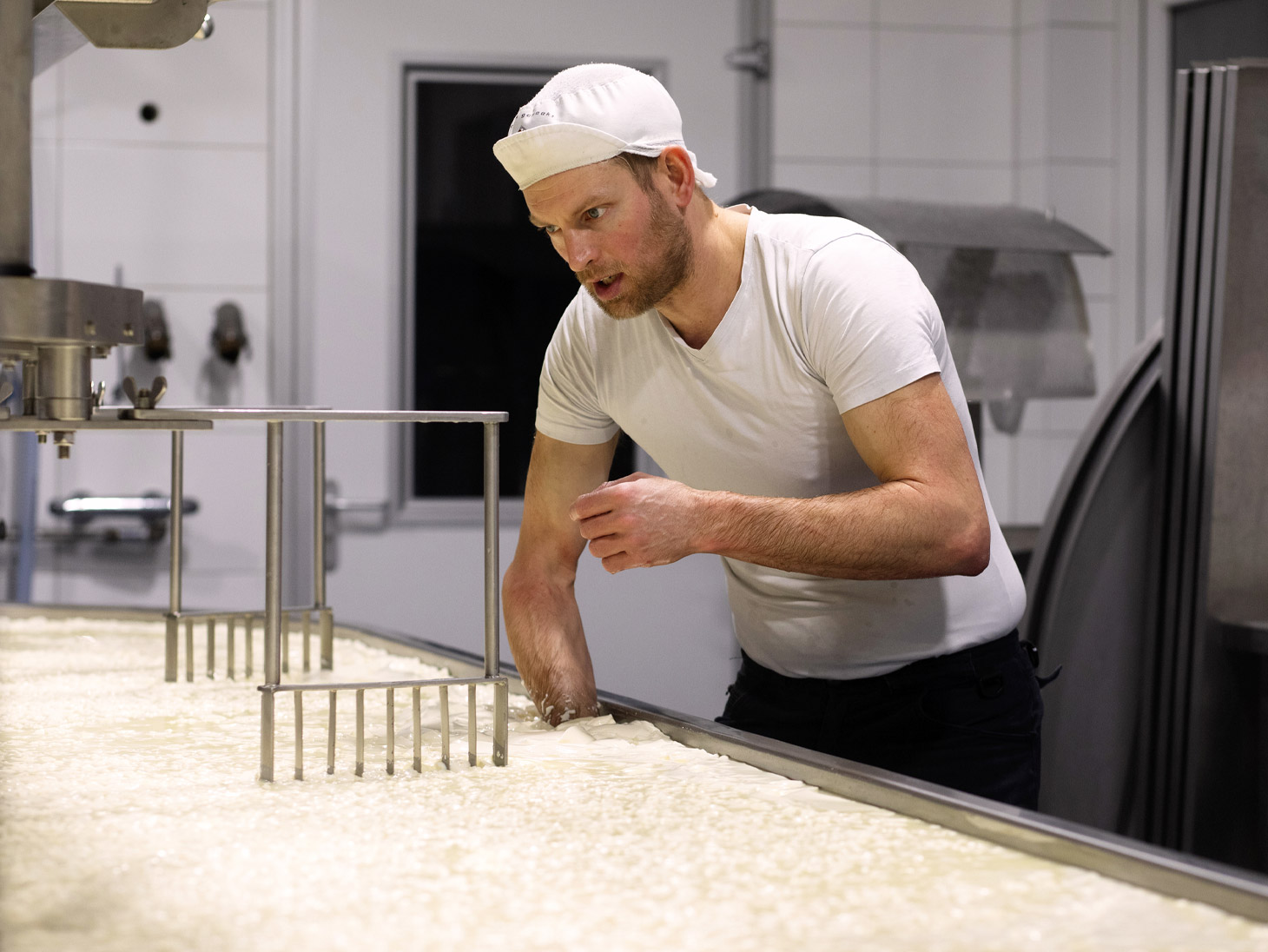
B for "Boerenkaas", which literally means "farmers’ cheese", made from raw milk coming at least by half from cows raised on the same farm where the cheese is processed. At the end of the 19th century, cheese production in the north of the Netherlands passed to large cooperatives. Fortunately, a few small producers resisted, preserving traditional Gouda. In 2005, the Boerenkaas brand was recognised as a "Traditional Speciality Guaranteed" (TSG), while in 2017, Unesco recognised it as a cultural heritage of the Netherlands.
G for "Goudse": the reference is to the town of Gouda, in the 17th century a strategic crossroads for the cheese market and still attended by local farmers and traders.
O for "Oplegkaas", which we can translate as "long aged". BGO cheese is produced in 20 kg wheels, designed for a long ageing, from 18 months up to three years. Moreover, the Artisan Gouda is a Slow Food Presidium only if the milk - strictly raw - is obtained from cows grazed outside day and night and fed with grass without replacement food, in the peat meadows of the Groene Hart.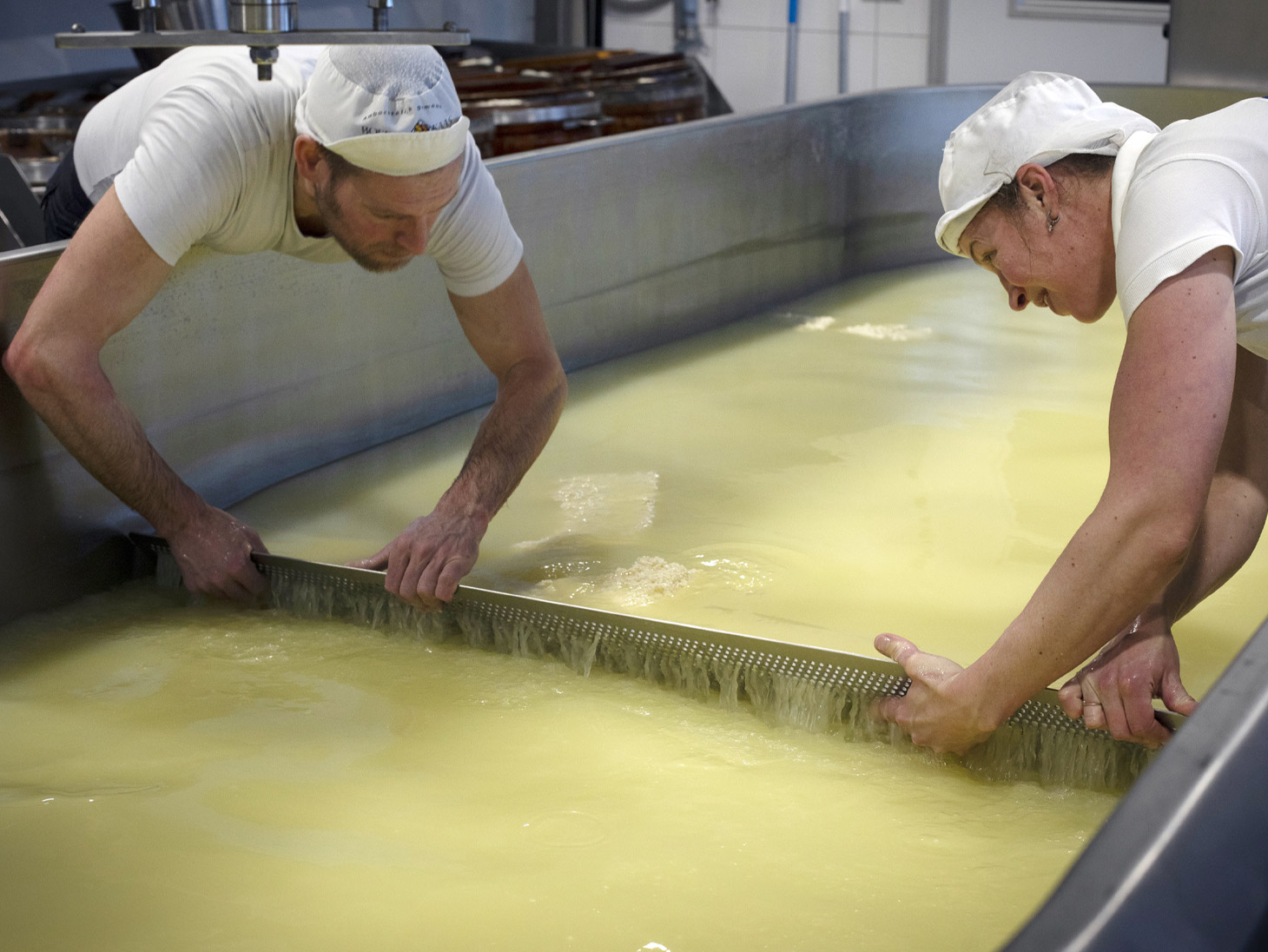
Zoeterwoude, where the Captein farm is located, is in fact right in the heart of the Grote Polder, a stretch of sea that has been drained, reclaimed and cultivated, extremely fertile and lush. The farm's own herd consists of 165 cows on lactation, mainly Red Friesians, which produce less milk than Black Friesians, but richer in protein and fat. We enter the processing room.
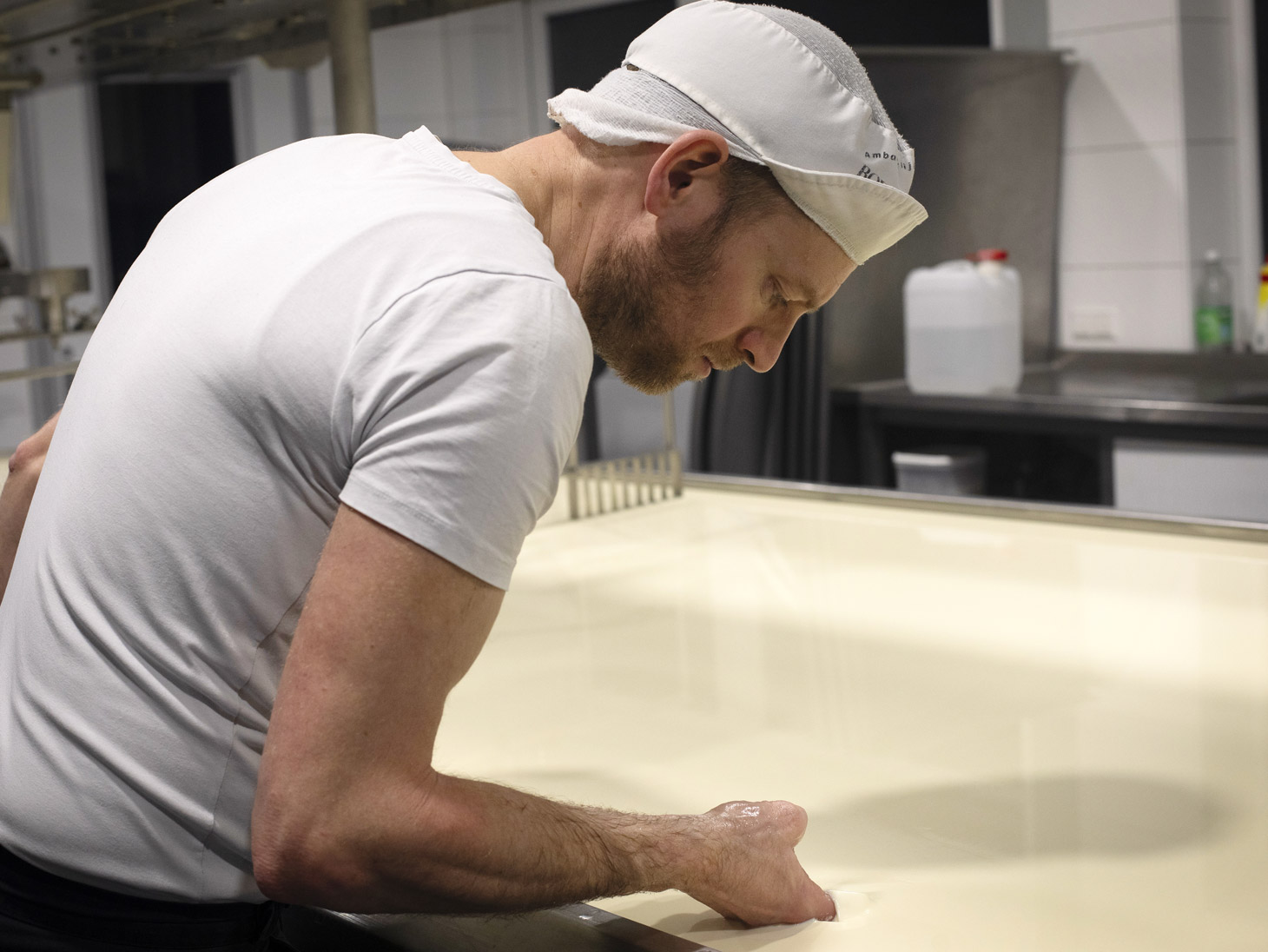
In the centre there is a large oval vat, very common in the Netherlands, with 4,500 litres of milk. Calf rennet and, previously, selected ferments have already been added. On the left the traditional wooden moulds where the forming takes place, on the right an old wooden press. After checking the texture of the curd, Frank sets the blades to start cutting it (hazelnut size); the same blades then rotate in the other direction to mix it during the washing phase.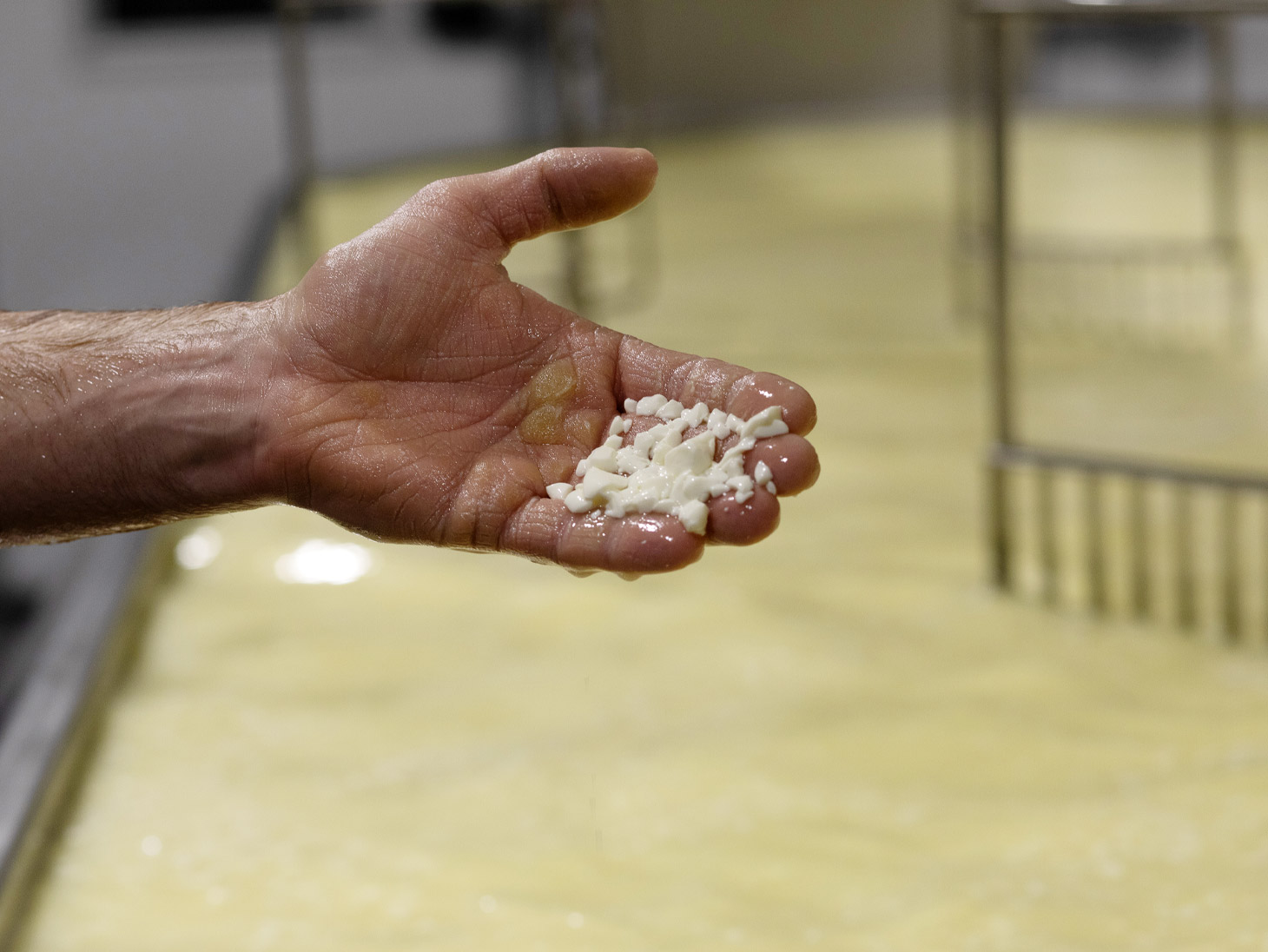
The washing of the curd is the most special stage in the processing of Artisan Gouda: after cutting, the mass is heated and rinsed with hot water, a technique that facilitates the draining of the whey and gives the cheese a special sweetness, even during long ripening. Usually, the curd is washed by pouring water into the vat at a maximum temperature of 60 °C, but Frank - he tells us - is doing tests with winter cheese to try to keep it softer by lowering the washing temperature by a few degrees: 58, 56, 54 °C.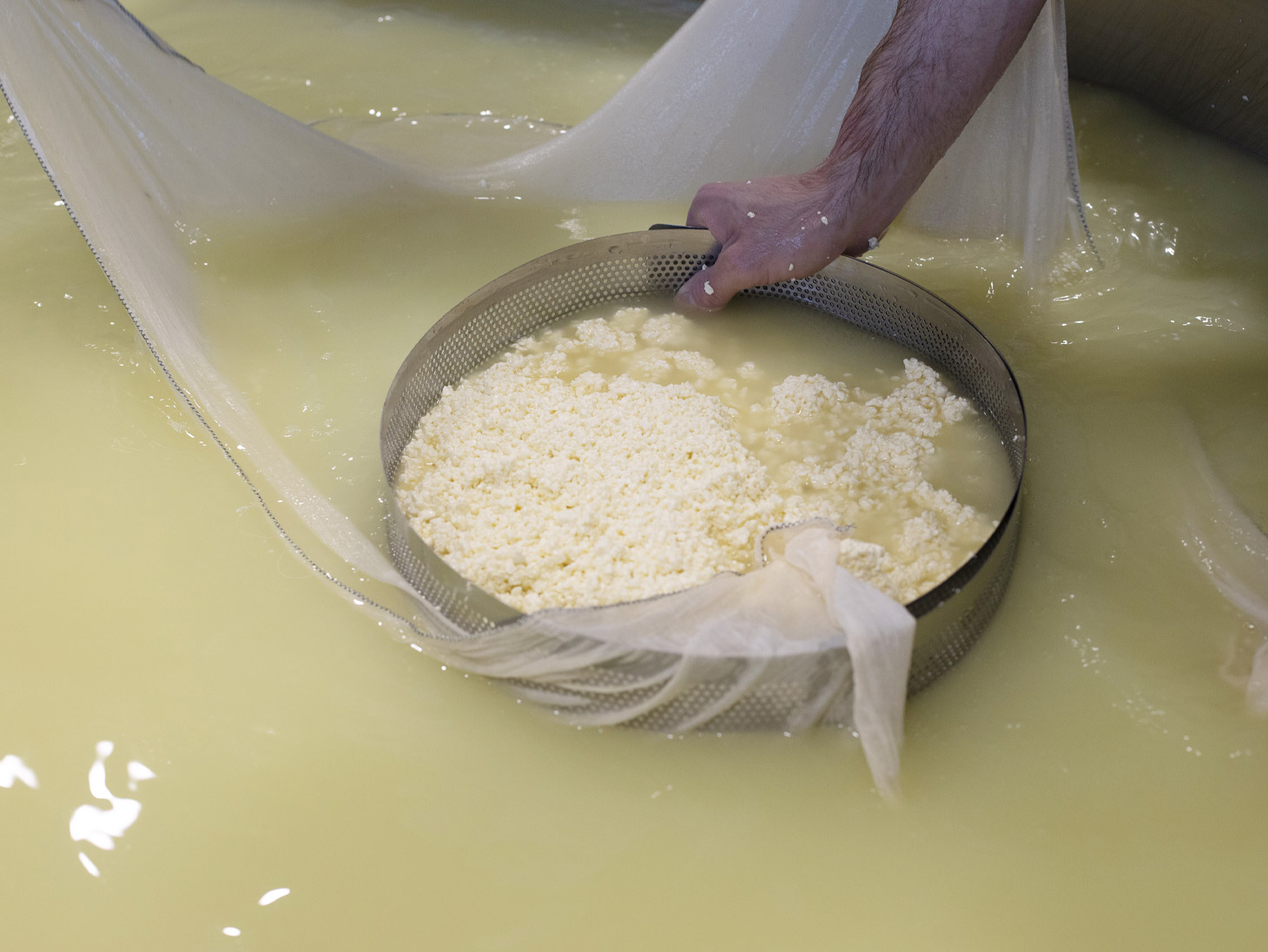
The curd doesn’t get warmer then 36,8 degrees, so still very much a raw milk cheese! After washing, the curd rests for about 10 minutes, during which time Frank and Femke clean all the moulds with soda. The attention to hygiene is very strict: all tools are carefully washed before use, from the blades to the sword, from the surfaces to the moulds.
Some of the whey is drained off immediately, and the curd is stirred again. Ten minutes of rest more and a further partial removal of whey, after which the curd is left to ripen for about an hour, covered by the whey, before moulding. We take advantage of the curd rest for a visit to the brine room and the maturing cellar. The Capteins safeguard a family brine, already used by Frank's grandfather, saturated with 2% salt: here the cheeses, placed on grids, are dipped for three days for salting. One day of drying before moving to the ageing room, where the wheels are turned every day the first weeks, and then less frequently.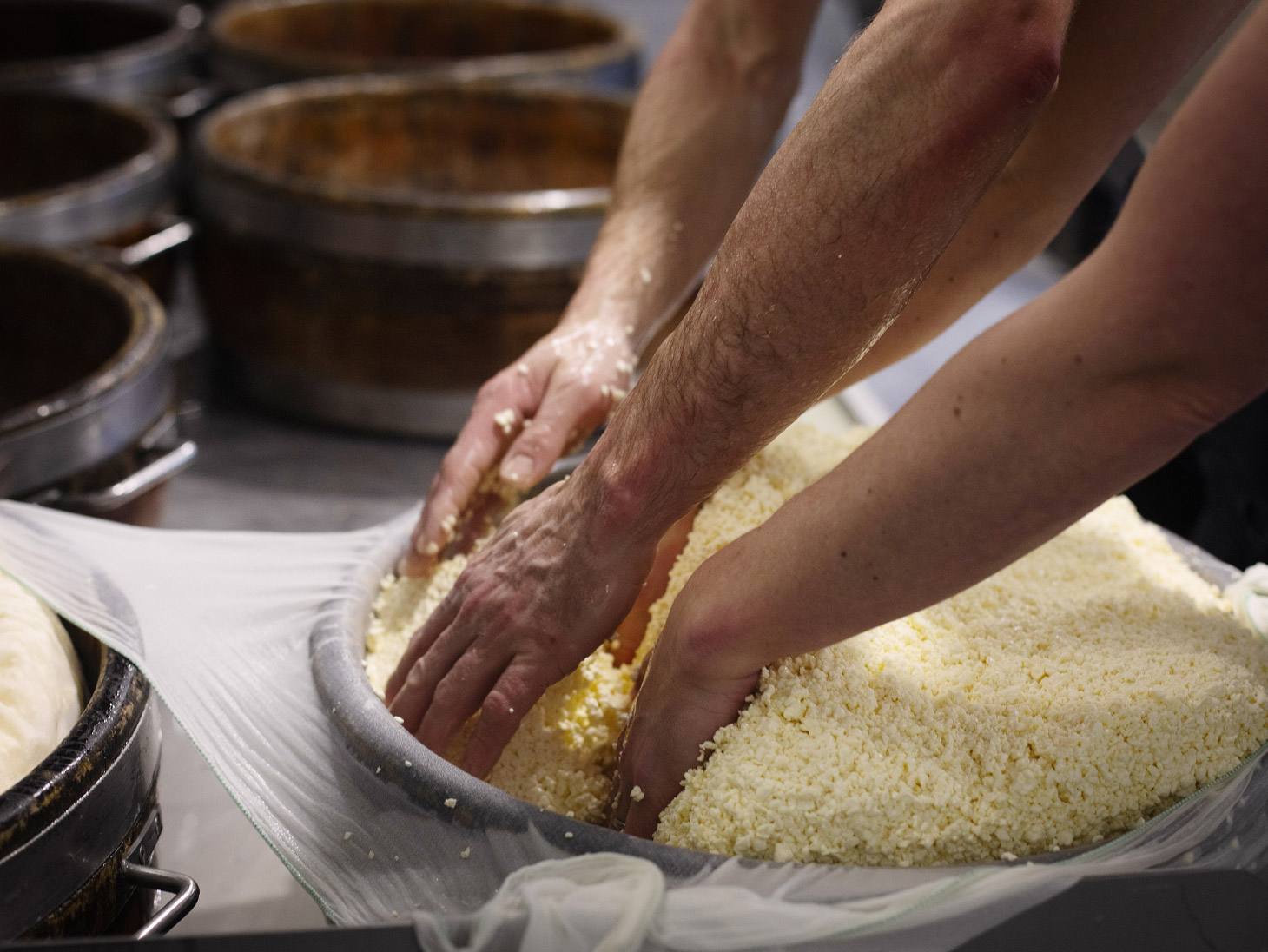
For the first six days when they are turned, the cheeses are also surface-treated with the typical wood glue, one face per day, until they get three layers. The use of wood glue - instead of the paraffin, used in the more "industrial" Gouda - allows greater osmosis with the outside, i.e. also greater weight loss, because it allows the cheese to breathe.
We move to the maturing rooms, where only the cheese needed for the farm's demands is aged - Frank tells us. The rest of the production is sold to an affineur and then bought back, a practice that is quite common in the Netherlands. Betty explains us how to read the QR code that identifies the batch: "round for pasteurised milk Gouda, oval for raw milk Gouda; it also contains a classification according to fat in dry matter percentage, for BGO on average 48+".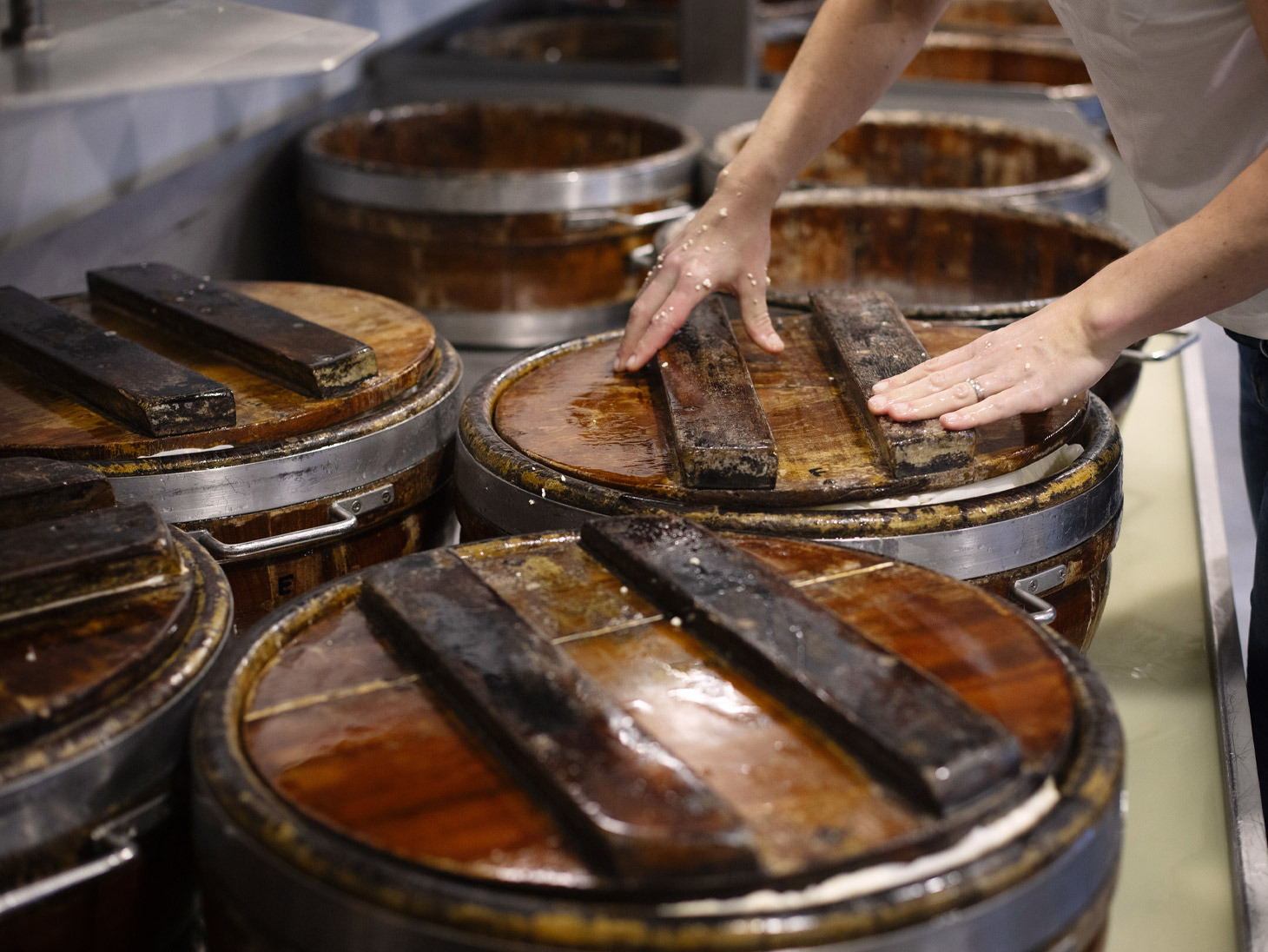
We move back to the processing room where the curd is resting, it is time to go ahead with cutting and moulding. "From a vat you get 18 wheels of 20 kg and 10 wheels of 16 kg. In summer, the wheels are bigger, up to 22 kg, because the cheese is fatter. At the moment we produce five days a week, the other two days we sell the milk".
Frank and Femke insert in the vat a kind of partition to further compact the mass before cutting. It's a kind of "blind cutting": the curd is still covered by the whey, not to come into contact with oxygen, so it's quite a challange to cut it into homogenous blocks. While Frank does the cutting, Femke prepares the wooden moulds, pouring hot whey over them to even out the temperature of the moulds and to fix the cheese surface, making it smoother.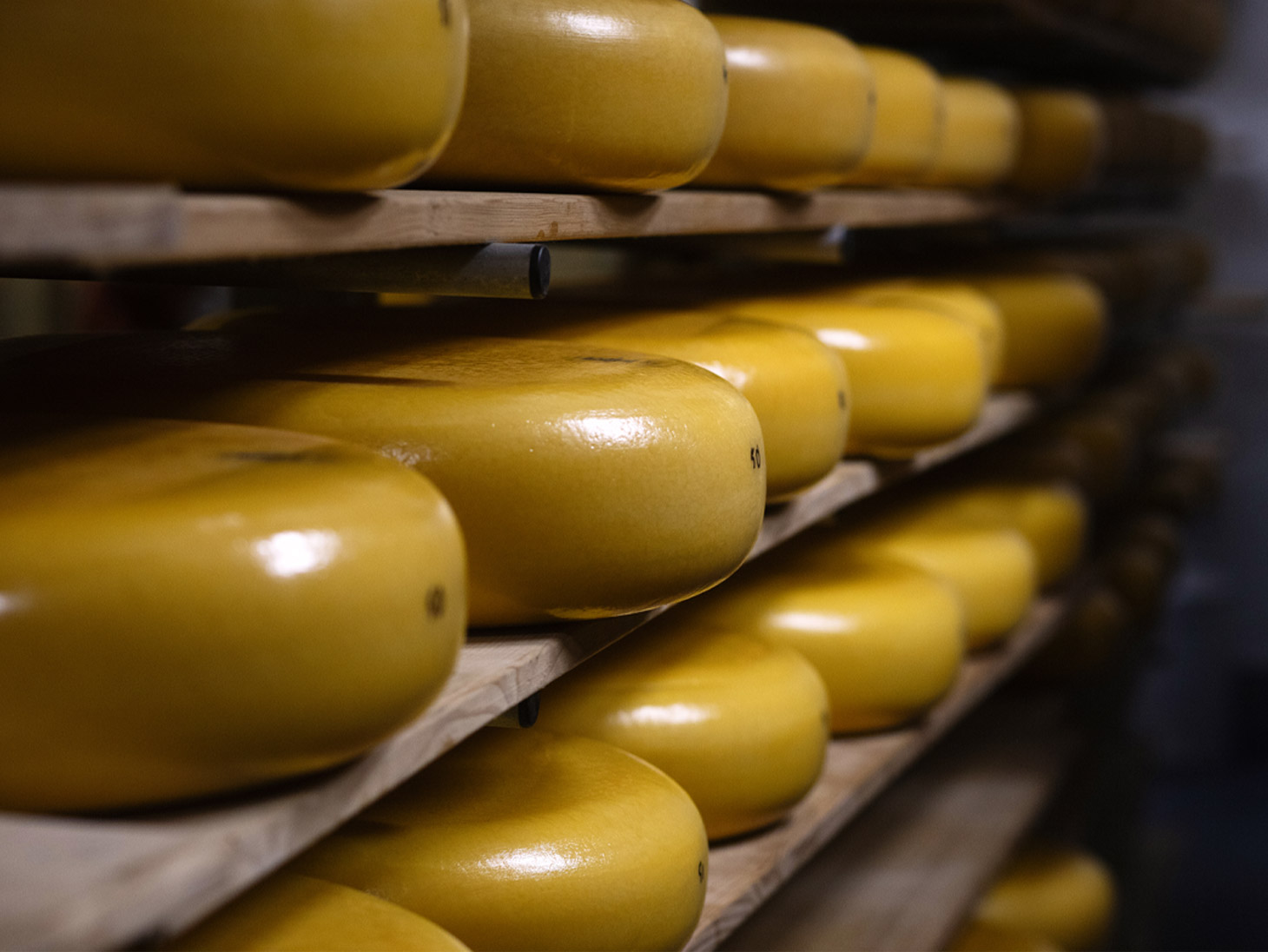
The curd blocks are pulled out with linen cloths, Frank on one side, Femke on the other: each block weighs about 35 kg, to obtain a 20-22 kg cheese wheel. The curd is placed in traditional wooden moulds, which are then pressed. Once the processing has ended, we pass by the farm cheese shop, the realm of Magadale, where we have the opportunity to taste the Artisanal Gouda at different aging.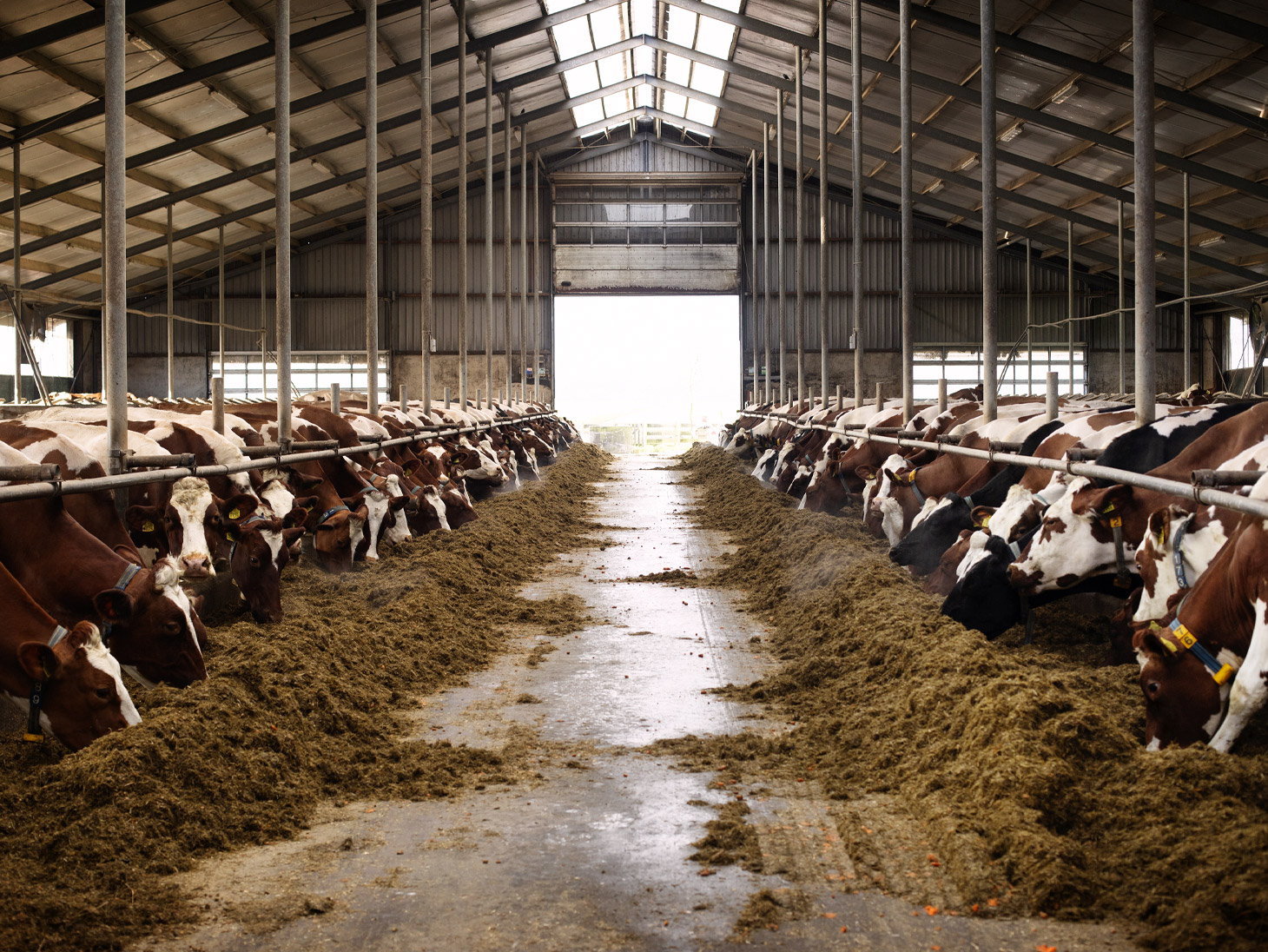
We choose the BGO produced in summer 2022, almost 30 months of ageing: the texture is compact, with a pleasant solubility, almost creamy, despite the long ageing; the taste is sweet, with a slight acidity, notes of caramel and pasture, persistent. We end our visit with a tour of the stable, with the guide of Kees: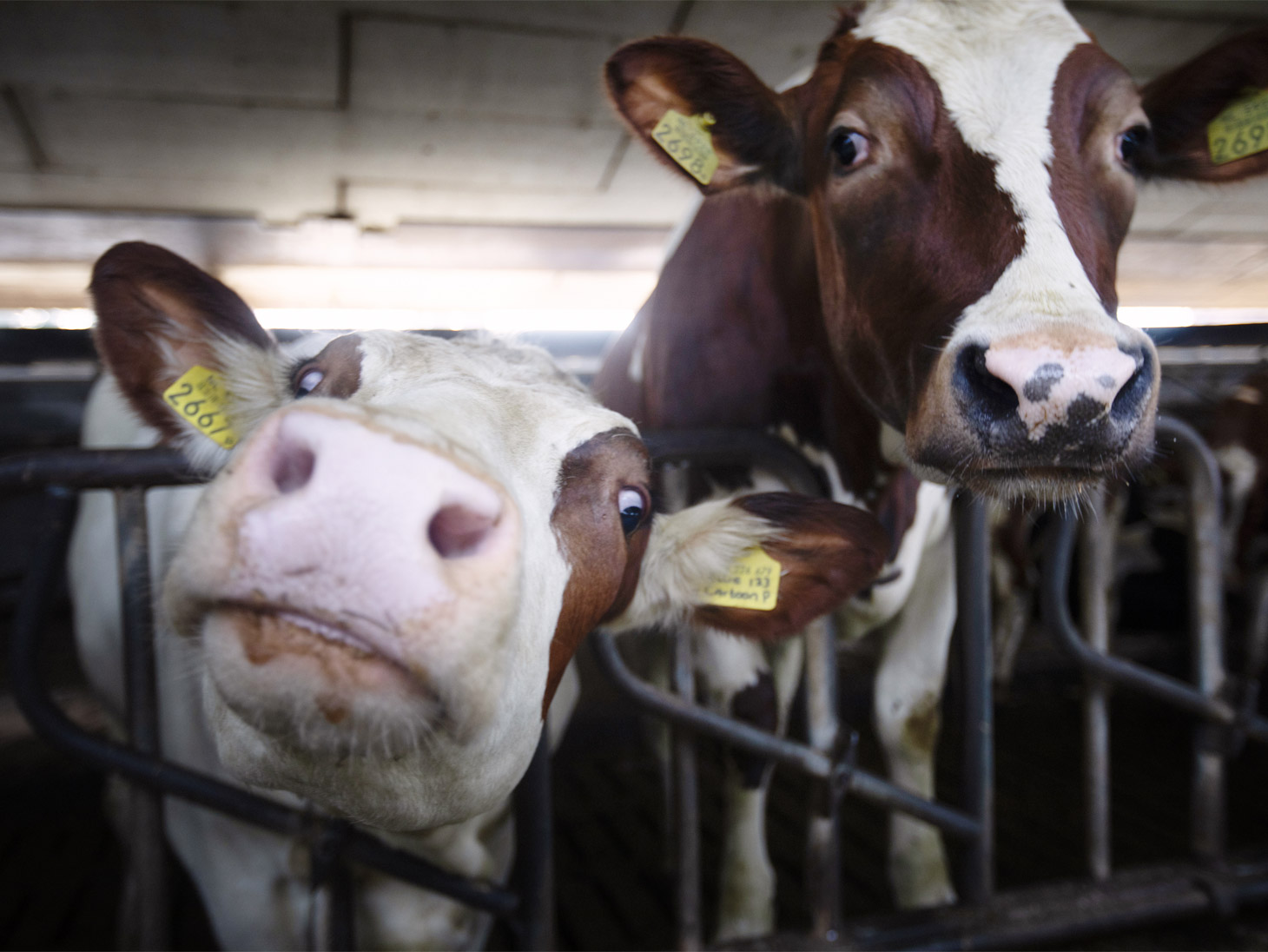
"We milk twice a day, at 4 a.m. and 4 p.m., by hand, with the milking machine. The average yield per cow is about 30 litres of milk per day, more or less depending on the season. In summer, the cows are mainly fed on pasture, with fresh grass, except for a little premium in cereals after milking. If it is too hot we only send them out to pasture at night, but in that case the cheeses produced cannot carry the Presidium label. Instead, in winter they eat our own hay produced in spring, with a small supplement of cereals".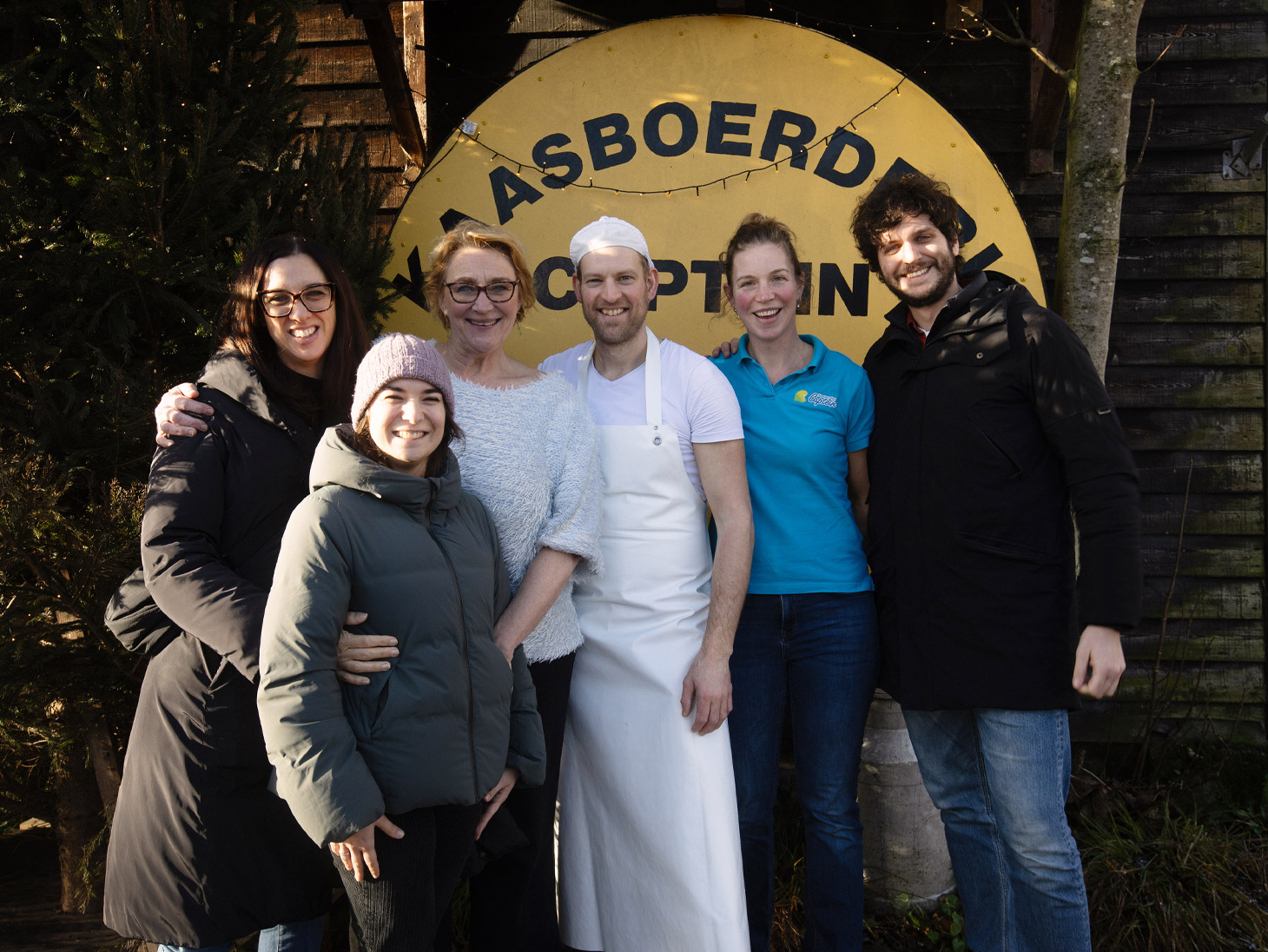
Last task before leaving towards the North Sea: take a group photo, with all the people we want to thank for this truly instructive experience, a deep dive in traditional Dutch cheese-making. A warm thank you to the whole Captein family for welcoming us to their cheese farm and a special thanks to Betty for giving us this wonderful opportunity.




